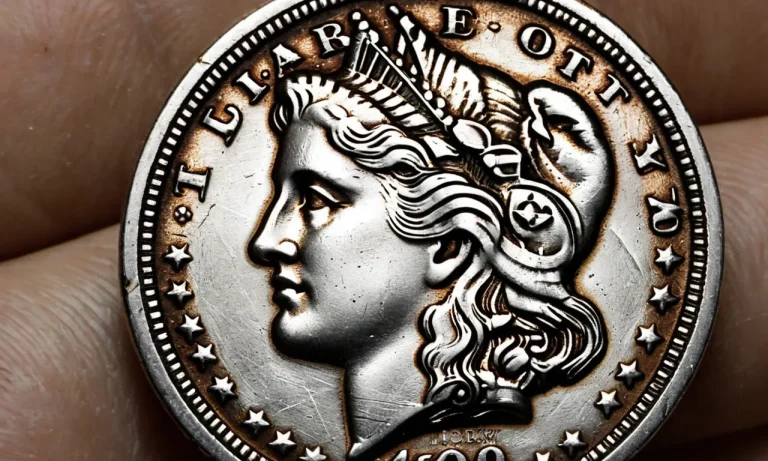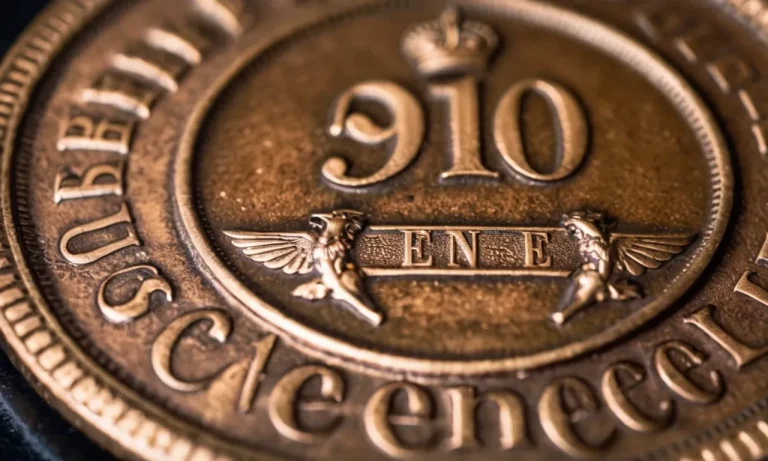What makes a quarter rare? Coin collecting has been a popular hobby for centuries, with people searching their pocket change for rare and valuable coins. But what exactly makes a quarter rare and valuable? If you’ve ever wondered what distinguishes a normal quarter from one worth hundreds or even thousands of dollars, read on.
If you’re short on time, here’s a quick answer: The main factors that make a quarter rare and valuable include low mintage, errors/varieties produced, age/demand, and condition. Key dates and coins with unique histories also tend to be more sought-after by collectors and investors.
In this comprehensive guide, we’ll explore all the details of what contributes to a quarter’s rarity and value. We’ll look at how factors like mintage, errors, age, demand, condition grading, and more come into play when determining if your quarter is a regular issue or a coveted rarity.
Low Mintage
Definition and Impact of Mintage
Mintage refers to the number of coins produced in a given year at a particular mint facility. Low mintage quarters have a smaller number of coins minted compared to other years and mints. This scarcity greatly impacts their value and demand among collectors and investors.
Key Low Mintage Quarters
Some of the most popular low-mintage quarters include:
- 1932-D Washington Quarter – Mintage: 436,800
- 1932-S Washington Quarter – Mintage: 408,000
- 1993-S Proof Silver Quarter – Mintage: 761,353
- 1998-S Proof Silver Quarter – Mintage: 878,792
These rare dates are highly coveted by collectors due to their tiny original mintage. Today, uncirculated examples can sell for hundreds to thousands of dollars depending on grade and demand.
| Year/Mint | Mintage | Value (MS65 Grade) |
|---|---|---|
| 1932-D | 436,800 | $3,000 |
| 1932-S | 408,000 | $11,000 |
| 1993-S | 761,353 | $40 |
As you can see, lower mintage directly translates to higher values for these rare Washington quarters. Savvy collectors understand that demand will likely continue pushing values higher over the coming decades.
Mint Errors and Varieties
There are several types of mint errors and die varieties that can make a quarter more valuable to collectors. Understanding the different types and what makes specific error coins rare can help identify potentially valuable quarters.
Types of Mint Errors
Some common mint errors include:
- Off-center strikes – The coin is badly misaligned when struck.
- Broadstrikes – Coins missing the raised rim around the edges from being struck outside the retaining collar.
- Double strikes – Coins with overlapping images from being struck multiple times.
- Clipped planchets – Incomplete blank disks lead to missing design elements.
Valuable Error Quarters
Some notably rare and valuable error quarters include:
- A 2004-D Wisconsin quarter that was double struck on a Sacagawea golden dollar planchet sold for over $20,000 in 2015.
- A 1937 Buffalo nickel struck on a quarter planchet sold at auction for $106,375 in 2019.
- A pair of 2000-P Georgia state quarters with dramatic off-center errors were valued at $15,000-$20,000 by the Professional Coin Grading Service.
Types of Die Varieties
Die varieties occur when the dies used to strike coins develop distinctive cracks, breaks, clashes, or other changes over time. Major types include:
- Cud Errors – Portions of a design element are missing due to cracks or breaks.
- Doubled Die Obverses – Design elements are noticeably doubled from misaligned die strikes.
- Repunched Mintmarks – Portions of mintmarks punched into working dies are visible.
Notable Die Variety Quarters
Some key die variety quarters with significant collector value include:
- A 1999 Connecticut quarter with a dramatic cud break omitting almost half the tree sold for $7,050 graded MS-66 by NGC.
- A 2004-D Wisconsin “Extra Low Leaf” quarter with a dramatically lowered leaf below the ear of corn has traded for over $5,000 for gem uncirculated examples.
- A 2000-P New Hampshire quarter with a strong die doubling of the state motto sold for $3,290 graded MS-67 by NGC.
Age and Collector Demand
Early Quarters (1796-1964)
The earliest quarters hold tremendous historical significance and are highly sought after by collectors. The 1797 Draped Bust quarter is one of the first quarters ever minted and has an extremely low mintage of just 6,146 coins.
Today there are likely less than 100 examples known to still exist, making them extraordinarily rare and valuable, with prices easily exceeding $100,000 for lower-grade specimens.
Other early standouts include the 1827 Capped Bust Quarter and the 1916 Standing Liberty Quarter. The 1827 has one of the lowest mintages for the series with just 4,000 coins struck. The 1916 Standing Liberty quarter marked the debut of the new design and had an extremely short production run before changes were made to the artwork the following year.
Both trade for strong premiums in the thousands of dollars even in lower circulated conditions.
Condition and Grading
Condition Overview
The condition of a coin refers to its state of preservation and wear. This is a key factor in determining a coin’s value and rarity. Coins that are in better condition, with less evidence of circulation and handling, are considered more desirable by collectors.
There are different levels of coin conditions, generally ranging from poor to mint state. Here are some of the main coin condition categories:
- Good – Well worn but still identifiable, with portions of lettering and designs visible
- Very Good – More of the coin’s details are visible compared to “Good” condition
- Fine – Light wear on the high points of the coin design and lettering
- Very Fine – Minor wear on the highest points of the coin design
- Extremely Fine – Very little wear, with most details remaining sharp
- About Uncirculated – Tiny signs of wear visible under close inspection
- Mint State (MS60 to MS70) – No evidence of wear, ranging from small marks to perfect condition
The better the condition, from very good up to mint state, the more valuable and rare a coin will typically be. However, even coins in lower conditions like good or very good can still have significant collectible value if they are scarce dates.
Grading Services and Slabbed Coins
Third-party grading services have revolutionized coin collecting over the last few decades. Companies like PCGS, NGC, and ANACS evaluate the condition and authenticity of coins, then seal them in protective plastic holders with their assessed grade.
These “slabbed” certified coins have become very popular. The credibility of the grading service and the consistency of their assessments have added confidence and liquidity to the coin market. Slabbed coins typically sell for significant premiums over raw coins in similar conditions.
For example, a 1932-D Washington Quarter graded MS65 by PCGS sold for over $12,000 in a 2022 auction. The same coin in a raw very fine condition might only sell for around $50.
So while condition is key, official grading from leading companies can drastically increase value. This makes certified coins in pristine grades widely sought after by collectors.
Some other benefits of third-party graded coins include:
- Authenticity guarantee against counterfeits
- Consistent, accurate, and unbiased assessments of preservation
- The tamper-evident casing that protects and preserves the coin
- Improved marketability – buyers have confidence in sight-unseen purchases
In the quest for elusive rare coins, more collectors are turning to graded examples encapsulated by trusted grading services. Slabbed coins with exceptional grades and eye appeal offer the ultimate in quality and valuable collectibility.
What Makes A Quarter Rare – Conclusion
As we’ve seen, many interacting factors contribute to a quarter’s rarity and collectibility. While valuable quarters may seem elusive, knowing what makes them special gives you an edge when searching pockets and bankrolls or buying coins sight unseen.
Low mintage, mint errors, age, demand, condition, key dates, and intrigue history all impact a coin’s worth above face value. Use this guide to recognize what’s ordinary versus extraordinary for quarters when building your collection or portfolio.
With some persistence and numismatic know-how, that rare quarter you’ve always hoped to find may be closer than you think. Whether in circulation, inheritances, auctions, or dealer offerings, valuable quarters do surface if you understand what makes them such coveted prizes among collectors and investors.




